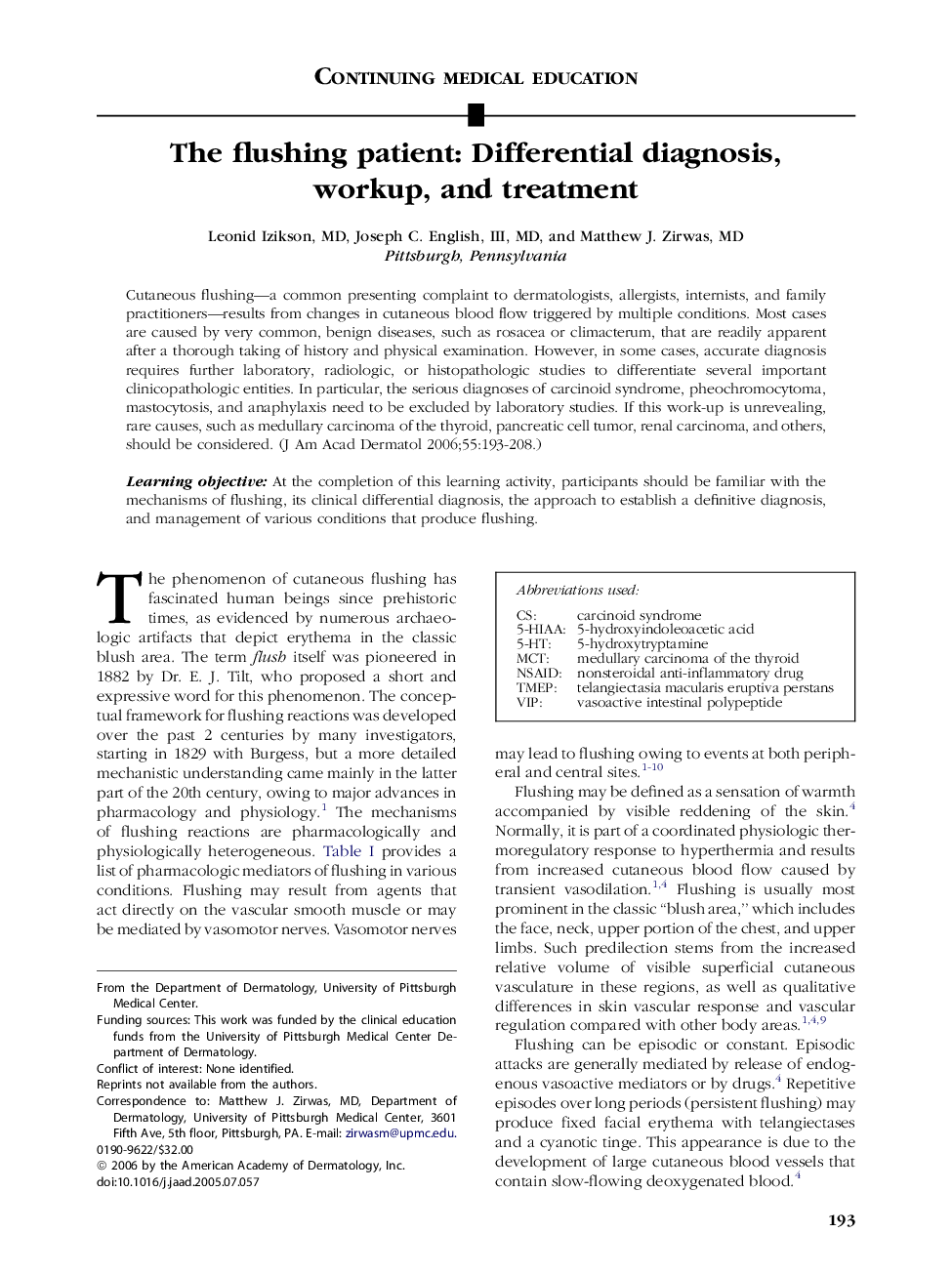| Article ID | Journal | Published Year | Pages | File Type |
|---|---|---|---|---|
| 3210316 | Journal of the American Academy of Dermatology | 2006 | 16 Pages |
Cutaneous flushing—a common presenting complaint to dermatologists, allergists, internists, and family practitioners—results from changes in cutaneous blood flow triggered by multiple conditions. Most cases are caused by very common, benign diseases, such as rosacea or climacterum, that are readily apparent after a thorough taking of history and physical examination. However, in some cases, accurate diagnosis requires further laboratory, radiologic, or histopathologic studies to differentiate several important clinicopathologic entities. In particular, the serious diagnoses of carcinoid syndrome, pheochromocytoma, mastocytosis, and anaphylaxis need to be excluded by laboratory studies. If this work-up is unrevealing, rare causes, such as medullary carcinoma of the thyroid, pancreatic cell tumor, renal carcinoma, and others, should be considered.Learning objectiveAt the completion of this learning activity, participants should be familiar with the mechanisms of flushing, its clinical differential diagnosis, the approach to establish a definitive diagnosis, and management of various conditions that produce flushing.
